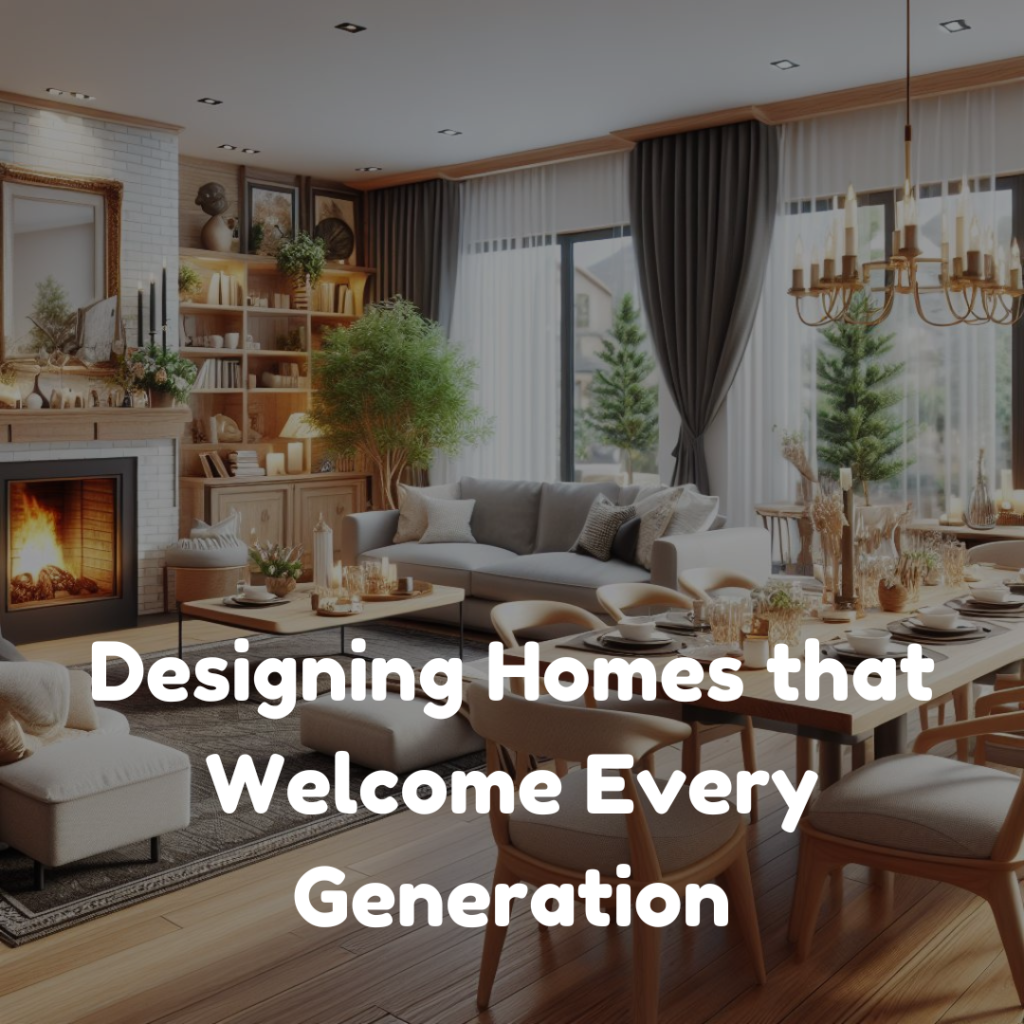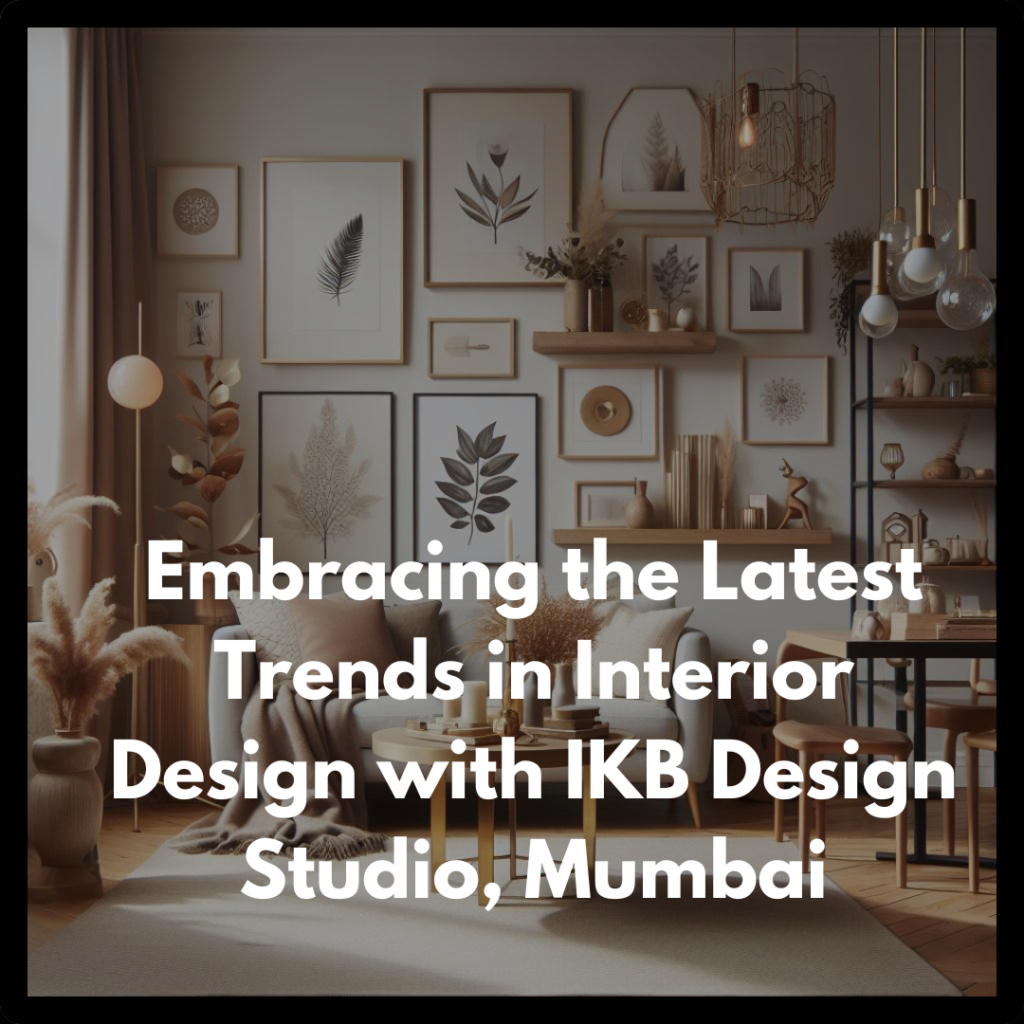Designing Homes for Multigenerational Living: A Guide by IKB Design Studio

In today’s dynamic world, multigenerational living is becoming increasingly popular, especially in bustling cities like Mumbai. Families are choosing to live together under one roof, blending traditions and modernity, to foster closer bonds and provide mutual support. At IKB Design Studio, we understand the unique challenges and opportunities that come with designing homes for multigenerational living. Our guide offers insightful tips to create a harmonious and functional living environment that accommodates everyone’s needs.
1. Prioritize Flexible Spaces
Adaptive Rooms: In a multigenerational home, flexibility is key. Design spaces that can adapt to different functions as needed. For instance, a guest room can double as a home office, or a family room can transform into a play area for children.
Movable Partitions: Use movable partitions or sliding doors to create adaptable spaces. These can open up areas for family gatherings or close off sections for privacy when needed. This flexibility ensures that the home can evolve with the changing needs of its residents.
2. Create Private Retreats
Personal Spaces: While togetherness is a hallmark of multigenerational living, privacy is equally important. Ensure that each family member has their own retreat, whether it’s a bedroom, a study nook, or a cozy corner.
Soundproofing: Incorporate soundproofing techniques in walls and floors to minimize noise transfer between rooms. This is especially crucial in ensuring that different generations, with varied routines and lifestyles, can coexist peacefully.
3. Design for Accessibility
Universal Design Principles: Apply universal design principles to make the home accessible to all family members, regardless of age or ability. This includes wider doorways, level floors, and step-free entrances.
Bathroom Modifications: Design bathrooms with accessibility in mind. Install grab bars, walk-in showers, and non-slip flooring. Consider a higher toilet seat and a lower vanity for ease of use by both elderly family members and children.
4. Incorporate Smart Home Technology
Convenience and Safety: Smart home technology can enhance convenience and safety in a multigenerational home. Automated lighting, security systems, and voice-controlled devices can make daily tasks easier and ensure the home is secure.
Assistive Technology: Consider incorporating assistive technology for elderly family members. This can include fall detection systems, medication reminders, and emergency response systems to provide peace of mind for the entire family.
5. Plan Communal Areas
Family Hubs: Design spacious communal areas where the family can come together. A large, open-plan kitchen and living area can serve as the heart of the home, fostering interaction and shared activities.
Outdoor Spaces: Don’t overlook the importance of outdoor areas. A garden, balcony, or terrace can be a versatile space for family gatherings, children’s play, or a peaceful retreat for relaxation.
6. Pay Attention to Storage
Ample Storage Solutions: With more people under one roof, effective storage solutions are essential. Incorporate built-in storage, such as cabinets, closets, and shelving, to keep the home organized and clutter-free.
Multifunctional Furniture: Use multifunctional furniture with hidden storage, like ottomans, beds with drawers, and benches with compartments. This helps maximize space while keeping essentials easily accessible.
7. Foster a Sense of Community
Shared Activities: Design spaces that encourage shared activities and hobbies. This could include a reading nook, a games area, or a communal kitchen garden. These shared spaces help strengthen family bonds and create lasting memories.
Family Traditions: Incorporate elements that reflect the family’s traditions and values. This could be a family photo wall, heirloom furniture, or a special space for family gatherings and celebrations.
8. Balance Tradition and Modernity
Cultural Sensitivity: In a multicultural city like Mumbai, homes often need to balance traditional aesthetics with contemporary designs. Integrate cultural elements into the home decor, such as traditional motifs, artwork, or artifacts, while keeping the overall design modern and functional.
Blended Styles: Mix traditional furniture pieces with modern decor to create a cohesive and aesthetically pleasing environment. This approach honors the family’s heritage while embracing contemporary living.
9. Sustainable Living
Eco-friendly Materials: Choose sustainable and eco-friendly materials for your home. Bamboo, reclaimed wood, and low-VOC paints are excellent choices that are both environmentally friendly and stylish.
Energy Efficiency: Design the home to be energy efficient. Use LED lighting, energy-efficient appliances, and solar panels to reduce the environmental footprint and lower utility bills, benefiting all generations.
Conclusion
At IKB Design Studio in Mumbai, we believe that designing homes for multigenerational living is about creating spaces that foster harmony, respect, and joy. By prioritizing flexibility, privacy, accessibility, and community, you can create a home that accommodates the needs of all family members, from the youngest to the oldest.
Multigenerational living presents a unique opportunity to blend the strengths of different generations, creating a rich, supportive, and dynamic living environment. For personalized design solutions tailored to your family’s needs, visit us at IKB Design Studio. Let’s design a home that brings your family closer together.
Also Read: Crafting Exceptional Sanctuaries




